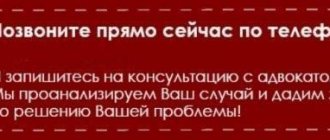Article 132 of the Criminal Code of the Russian Federation - violent actions of a sexual nature, with the use of violence, with the threat of violence.
Issues of qualification of violent acts of a sexual nature and rape are considered in the Resolution of the Plenum of the Supreme Court of the Russian Federation dated December 4, 2014 No. 16 “On judicial practice in cases of crimes against sexual integrity and personal freedom.”
Violent acts of a sexual nature mean a criminal act (under Article 132 of the Criminal Code of the Russian Federation). Among such actions (different from forced sexual intercourse, which constitutes the essence of rape), the criminal law of the Russian Federation classifies lesbianism, sodomy and other acts of a sexual nature (the law does not define a specific circle) with violence or threats of its use against victims and other persons or using helplessness victim.
Corpus delicti
The objective side of a crime is characterized, first of all, by the action in the form of an act, as well as alternative options for committing a crime or the circumstances of its commission.
The threat or use of violence against an indirect or direct victim is considered a method of committing a crime. The use of violence implies actual physical violence; threat – an actual threat of immediate and actual use of physical violence.
The crime is considered completed from the beginning of sexual intercourse, regardless of its physiological end and subsequent consequences (clause 7 of the Resolution of the Plenum of the Supreme Court of the Russian Federation of December 4, 2014 No. 16).
The subject of a crime is a person who has reached the age of 14.
The totality and qualification of crimes
It is worth considering the issues that arise in court practice when qualifying the acts of perpetrators.
The threat of committing other acts (disclosure of defamatory information, destruction of property, etc.) or the threat of further use of physical violence, as well as ordinary coercion (i.e., the use of persistent persuasion without the threat of violence) are not considered grounds for qualifying acts under Art. . 132 of the Criminal Code and, if there are grounds, can qualify under Art. 133 CC. When rape causes moderate or minor harm to health, then such actions are covered by Art. 132 of the Criminal Code.
In this case, the infliction of moderate or slight harm to health must take place before or during sexual intercourse in order to overcome or prevent the resistance of the victim, to suppress her will; when harm to health is caused after rape, then in this case the crimes are considered cumulative - falling under Art. 132 of the Criminal Code and crime against the person. Murder or grievous bodily harm during rape is qualified under Art. 105 and 111 of the Criminal Code (clauses 2 - 4 of the Resolution of the Plenum of the Supreme Court of the Russian Federation of December 4, 2014 No. 16).
In the case where the intent of a person includes committing (in different sequences) violent acts of a sexual nature and rape against one victim, then this is a set of crimes falling under Art. 131 and 132 of the Criminal Code. In this case, actions are qualified regardless of whether there was a break in time during the commission of violent acts of a sexual nature or rape against the victim.
Sexual assault
Article 132 of the Criminal Code of the Russian Federation has become widespread in judicial practice. The Code of Administrative Offenses does not provide for such norms.
Over the past year, quite a large number of sentences have been passed. Acquittals are rare
Definition
Violent actions under the article of the Criminal Code of the Russian Federation are considered by a separate Plenum of the Supreme Court. The act was adopted in 2014 under No. 16.
Violence will involve the commission of:
- sodomy;
- lesbianism;
- other activities with a sexual orientation.
It is worth noting that such actions are distinguished from sexual intercourse, which is committed in a violent form. The new law does not provide a list of actions falling into this category
The editors indicate that violence or threats are used against the injured party. In addition, the offender may exploit the victim's helplessness.
Compound
Objective signs of an act have a certain characteristic.
It consists of:
- In the actions of the culprit. They have an active form.
- The method of execution is alternative.
- The circumstances surrounding the offense can also be assessed.
The method is associated with the use by the guilty party of violence or threats to use it. The addressee is the victim or an indirect person. Consultants in the field of jurisprudence classify the composition as formal. This means that it is over when sexual intercourse begins. The consequences don't matter.
The subject is considered a citizen who has reached the age of fourteen and is not deprived of sanity. Object – relationships developing in the sphere of human sexual freedom.
The perpetrator acts with intent. Jurisdiction is assigned to district level courts.
Qualification and Competency
In court practice, questions arise regarding the qualification of the action in question. In particular, when the perpetrator threatens to use physical violence against the injured party in the future, to disseminate information disgracing him, etc., this cannot be considered under Article 132 of the Criminal Code. There will be no change in qualifications when the assault causes moderate or minor harm to the victim. This is due to the fact that the actions are fully covered by Article 132 of the Criminal Code.
This point should be considered from the point of view that harm is caused:
- before sexual intercourse;
- in the process of its implementation.
The perpetrator is guided by the goal of overcoming the will of the victim. The basis for initiating a case is a statement received from the injured party or its representative.
If, as a result of the crime, death occurs or serious harm is caused to the victim, the assessment is given under Articles 111 or 105, respectively.
When a person wishes to commit the acts provided for in Articles 131 and 132 against a female representative, they are qualified as a combination.
Punishment
When assigning punishment to the perpetrator, the court proceeds from the provisions of the Criminal Code and the Code of Criminal Procedure.
Severe punishment is provided for committing this action:
- Among the most severe measures specified in parts of the article is imprisonment. The term is set to 20 years.
- It is worth noting that the judicial authorities most often use imprisonment.
The punishment will be suspended in the presence of certain circumstances, including mitigating ones. Most often, this happens if the victim made a request during the meeting not to impose severe punishment on the rapist.
Responsibility and punishment
Such a crime carries a severe penalty - up to 20 years in prison. Even under Part 1, courts punish with imprisonment. Only if there are mitigating circumstances, the culprit can receive a suspended sentence. As a rule, this is possible when the victim forgives the offender and asks for a less severe punishment.
Qualifying features of Article 132
- With extreme cruelty or threat of murder. For rape involving the infliction of grievous bodily harm or the threat of murder, or with special cruelty to the victim or other persons, liability is provided for in paragraph “b” of Part 2 of Art. 132 of the Criminal Code. The conditions for its qualification are set out in paragraph 11 of the Resolution of the Plenum of the Supreme Court of the Russian Federation dated December 4, 2014 No. 16. When qualifying a crime under this point, it does not matter whether the perpetrator really wanted to use violence; It is enough that the victim perceived the threat as real.
When an act is qualified under paragraph “b” of Part 2 of Art. 132 of the Criminal Code of the Russian Federation, it must be taken into account that the term special cruelty implies both the commission of violent acts of a sexual nature or rape, as well as other circumstances indicating the special cruelty of the perpetrator. It is established that the perpetrator wanted to commit this crime with particular cruelty.
Particular cruelty is expressed in torture, infliction of suffering, torture, mockery of the victim when committing rape or other acts of a sexual nature, committing these acts in front of his relatives, and in the suppression of resistance, causing severe moral or physical suffering to the victim or other persons.
- By prior conspiracy by a group of persons. Violent acts of a sexual nature and rape are recognized as committed by a group of persons (an organized group, persons by prior conspiracy) in the case of sexual violence by several persons, as well as in the case of concerted violence or the threat of violence by several persons, and the commission of forced sexual intercourse or violent acts of a sexual nature with each or one of them.
Violent acts of a sexual nature and rape committed by a group of persons are recognized as the acts of persons who committed violent acts of a sexual nature or forcible sexual intercourse, as well as the acts of persons who assisted them, using mental or physical violence against the victim or other persons. The actions of persons who did not personally commit violent acts of a sexual nature or forced sexual intercourse, as well as using threats or violence to assist other persons in committing a crime, are qualified as co-perpetrators of violent acts of a sexual nature or rape.
- When infected with a sexually transmitted disease. Responsibility for rape, which led to infection with a venereal disease (clause “c” of Part 2), occurs if the person who infected the victim with a venereal disease knew about the disease, the inevitability or possibility of infection and wanted or allowed such infection, and also assumed the possibility of infection, but arrogantly wanted to prevent this consequence. In this case, no additional qualifications are required under Art. 121 CC.
- In relation to a minor or a person under 14 years of age. According to paragraph “a” of Part 3, rape of a minor involves rape of the victim who was under 18 years of age at the time of the commission of the act; Rape of a child under 14 years of age is regulated by paragraph “b” of Part 4 of Art. 132 of the Criminal Code. To qualify under these points, it must be established that the culprit knew the age of the victim (was a relative, neighbor or acquaintance; age was noticeable in appearance) or allowed it (clause 22 of the Resolution of the Plenum of the Supreme Court of the Russian Federation of December 4, 2014 No. 16) . At the same time, a conscientious misconception of age (if the victim looks older) does not imply a change in this qualifying attribute.
Judicial practice under Article 132 of the Criminal Code of the Russian Federation.
- 1.
Decision No. 2A-515/2018 2A-515/2018~M-520/2018 M-520/2018 dated October 30, 2021 in case No. 2A-515/2018
Fokinsky City Court (Primorsky Territory) – Civil and administrative
...has an unexpunged and outstanding criminal record by the verdict of the Fokinsky City Court of the Primorsky Territory dated December 1, 2015, by which he was convicted under paragraph “a” of Part 3 of Art. 132 of the Criminal Code of the Russian Federation to 4 years 6 months of imprisonment without deprivation of the right to hold certain positions or engage in certain activities, without restriction of freedom, with serving the sentence in a correctional facility...
- 2.
Verdict No. 1-248/2018 of October 30, 2021 in case No. 1-248/2018
Orenburg District Court (Orenburg Region) – Criminal
...address>, convicted on April 5, 2006 by the verdict of the Orenburg Regional Court of Orenburg under paragraph “c” of Part 3 of Art. 131, paragraph “c”, part 3 of Art. 132 of the Criminal Code of the Russian Federation to punishment in the form of imprisonment for a term of 11 years in a maximum security correctional colony, was released after serving the term on June 1, 2016, accused of ...
- 3.
Appeal decision No. 22-6697/2018 dated October 30, 2018 in case No. 22-6697/2018
Perm Regional Court (Perm region) – Criminal
...Vetoshkin N.F. is serving a sentence according to the verdict of the Voskresensky City Court of the Moscow Region dated June 22, 2011, by which he was convicted under paragraph “a” of Part 3 of Art. 132, part 5 art. 69 of the Criminal Code of the Russian Federation to 10 years of imprisonment with restriction of freedom for 1 year, with the establishment of restrictions and the imposition of duties provided for in Part 1 of Art. ...
- 4.
Appeal decision No. 22-1698/2018 dated October 30, 2018 in case No. 22-1698/2018
Supreme Court of the Republic of Sakha (Yakutia) (Republic of Sakha (Yakutia)) – Criminal
...to 4 years 8 months of imprisonment to be served in a maximum security penal colony; – June 10, 2009 under paragraph “c” of Part 3 of Art. 132 of the Criminal Code of the Russian Federation to 8 years in prison, paragraph “c”, part 3 of Art. 132 of the Criminal Code of the Russian Federation to 8 years in prison, on the basis of Part 3 of Art. 69 CC...
- 5.
Appeal decision No. 22-5988/2018 dated October 29, 2018 in case No. 22-5988/2018
Supreme Court of the Republic of Bashkortostan (Republic of Bashkortostan) – Criminal
... Art. 158 of the Criminal Code of the Russian Federation to 1 year of suspended imprisonment with a probationary period of 8 months, - September 20, 2011 under clause “b”, part 4 of art. 132, part 1 art. 119 of the Criminal Code of the Russian Federation, on the basis of Part 3 of Art. 69 of the Criminal Code of the Russian Federation and Part 5 of Art. 74, art. 70 of the Criminal Code of the Russian Federation (taking into account the cassation ruling ...
- 6.
Appeal decision No. 22-5791/2018 dated October 29, 2018 in case No. 22-5791/2018
Novosibirsk Regional Court (Novosibirsk region) – Criminal
... dated May 4, 2008 due to the expiration of the statute of limitations, since he is serving the main sentence for committing a crime under paragraph “c” of Part 3 of Art. 132 of the Criminal Code of the Russian Federation, and the punishment under the sentence of May 4, 2008 was added in accordance with Article 70 of the Criminal Code of the Russian Federation, and therefore, in the opinion of the convicted person, the sentence of 04 ...
- 7.
Decision No. 2A-6414/2018 2A-6414/2018~M-6507/2018 A-6414/2018 M-6507/2018 dated October 29, 2021 in case No. 2A-6414/2018
Privolzhsky District Court of Kazan (Republic of Tatarstan) – Civil and administrative
...4 Article 117, Article 40 of the Criminal Code of the RSFSR to 10 years in prison, by resolution of the action of S.P. Maksimov. reclassified to point “c” of Part 3 of Article 132 of the Criminal Code of the Russian Federation, released DD.MM.YYYY on parole for 1 year 8 months 20 days; DD.MM.YYYY under Part 3 of Article 30 and Part 1...
- 8.
Decision No. 2-618/2018 2-618/2018~M-590/2018 M-590/2018 dated October 29, 2021 in case No. 2-618/2018
Uvarovsky District Court (Tambov region) – Civil and administrative
...Tambov region from 02/10/2005. according to the verdict dated October 29, 2004, of the Uvarovsky District Court of the Tambov Region for the crime provided for in clause “d”, part 2 of art. 132 of the Criminal Code of the Russian Federation to 6 years 6 months of imprisonment (start of term 06.06.2004; end of term 05.12.2010). Receipts for payment of housing and communal services confirm that plaintiff Khairov...
- 9.
Decision No. 2A-592/2018 2A-592/2018~M-727/2018 M-727/2018 dated October 29, 2021 in case No. 2A-592/2018
Skopinsky District Court (Ryazan region) – Civil and administrative
...YYYY and from DD.MM.YYYY, according to Art. 112 part 1 of the Criminal Code of the Russian Federation as amended. Federal Law dated March 7, 2011 No. 26-FZ, under Art. 132 Part 1 of the Criminal Code of the Russian Federation, under Art. 105 part 2 clause “c, j” of the Criminal Code of the Russian Federation, applying the provisions of Art. 69 of the Criminal Code of the Russian Federation to 14 years 10 months imprisonment...
- 10.
Decision No. 2A-6925/2018 2A-6925/2018~M-7244/2018 M-7244/2018 dated October 26, 2021 in case No. 2A-6925/2018
Abakan City Court (Republic of Khakassia) – Civil and administrative
... MM.YYYY born, living at the address, convicted on 09.09.2005 by the Abakan City Court of the Republic of Khakassia under Part 2 of Article 131, Part 2 of Art. 132 of the Criminal Code of the Russian Federation to 8 years in prison. Released from prison on January 11, 2013 after serving his sentence. Has a criminal record in the past: 08/28/2001 Abakansky ...
Pages← previousnext →
- 1
- 2
- 3
- 4
- 5
- 6
- 7
- …
Limitation periods for criminal prosecution
The limitation period for bringing to justice for the elements of the act, which is provided for in parts 1 and 2, is 10 years from the date of commission. For actions that include parts 3 and 4 - 15 years.
Thus, even a long time after the commission of the act, the perpetrators may be brought to criminal liability. But you need to take into account the fact that over time it is more difficult to initiate a criminal case due to insufficient evidence of guilt.
For example, N. wanted to commit violent acts against P. and went to her home. Using physical violence and threatening to kill, he had sexual intercourse with the victim, then threatened to kill her if she told the police. Fearing for her own life, P. did not tell anyone about what happened for a long time. After 1.5 years, P. learned that N. was serving a sentence in prison for robbery. Realizing that the suspect would not carry out his threats, she filed a police report to prosecute him for violent acts committed more than a year ago. After conducting a procedural check, the investigator decided to refuse to initiate a criminal case because, apart from the words of the victim, there was no other evidence that a violent act had been committed.
Moral injury
Victims in criminal cases may be compensated for property damage caused by the crime, the costs that resulted from their participation in the preliminary investigation and in court, including the costs of a representative, in accordance with the terms of Art. 161 Code of Criminal Procedure of the Russian Federation.
The amount of compensation for a victim's claim for compensation for moral damage in monetary form is determined by the court when considering a criminal case or in civil proceedings.
When deciding the issue of compensation for moral damage, the court takes into account Art. 151 and paragraph 2 p. 1101 of the Civil Code of the Russian Federation and the nature of moral and physical suffering inflicted on the victim, the degree of guilt, based on the requirements of justice and reasonableness. If moral damage is caused by the criminal acts of several persons, then it is compensated in shares.
The court determines the nature of moral and physical suffering, taking into account the circumstances in which the harm was caused, the characteristics of the victim (health, age, behavior after the crime, etc.) and other circumstances (for example, loss of a job).
Responsibility
These types of crimes are always committed with direct intent. This influences the legislator's determination of the preventive measure.
Limitation periods and jurisdiction
The legislative acts provide that the composition in question is subject to a statute of limitations of ten years. This period begins to count from the moment the attack was committed. When the act is provided for by part three or four, such a period is 15 years.
It is worth noting:
- Taking into account these provisions, it is possible to bring the perpetrator to justice long after the crime. The deadline is reflected in the law.
- Initiating a case is more difficult, since obtaining evidence is problematic.
These provisions are widely used in practice. This is due to the fact that the category of cases in question is common. Investigators of the Investigative Committee of the Russian Federation have the authority to initiate criminal cases in this category.
Moral injury
The injured party can count on compensation for damages of a moral nature. To do this, you need to file a claim in court. The size is subject to determination based on the results of the consideration of the case.
In this case, the provisions of the Civil Code of the Russian Federation are taken into account:
- Article 151;
- Article 1101.
Pay attention to the nature of the harm caused to the victim. Her moral suffering is reflected
When there are several perpetrators in the case, compensation is made in shares.
Conditional sentence
The likelihood of a suspended sentence being applied to the perpetrator is low. This is due to the danger of the assault committed for the public. A real sentence is imposed in 85 percent of cases.
The minimum penalty is three years of imprisonment when:
- There are mitigating circumstances. They are expressed by an admission of guilt.
- The person actively assisted in the investigation of the case.
- Other.
The position of the victim in the case is also taken into account.
Termination
If the body conducting the investigation receives a statement from the victim about the act committed, then it will not be possible to stop the proceedings.
Does not take into account:
- the desire of the injured party to stop the persecution;
- actions aimed at reconciling the parties.
These provisions are related to the fact that the offense belongs to the category of grave or especially grave assaults.
Questions for the expert
The expert carefully examines the victim’s genital area, her shoes and clothes, which may contain traces of the criminal. He needs to competently answer the questions:
- Are there signs of sexual intercourse or sexual assault?
- How long ago were these acts committed?
- Are there scratches and abrasions, bruises and swelling, fractures, etc. on the victim’s body?
- Was the victim helpless?
Stages of examination
Experts examine the case materials, circumstances and features of the committed act. They have access to all the documentation that records the physical and mental state of the victim after the crime.
The expert talks with the victim, asking about the nuances of rape, for example, about special cruelty or the use of foreign objects. the expert carefully examines the victim’s shoes and clothing to detect traces of criminals related to the crime: threads, hair, biological fluids. If such are found, they are sent for laboratory testing.
The expert examines the victim: the condition and type of genitals, and other signs of rape. The neck, hips, face, chest, arms and mouth are examined.
The results of the examination are summarized and an expert report is written confirming or refuting the fact of rape.
A forensic medical examination of rape is carried out in any case when the victim applies to law enforcement agencies with a statement.
Expertise
A study must be carried out on the affairs of the group in question.
To be able to answer questions related to the commission of sexual crimes, it is necessary to conduct research that is of a forensic nature.
An examination is carried out for the purpose of:
- Confirm the existence of violence.
- Threats. They can speak out both to the victim and to third parties.
When there is a version of rape, an examination is mandatory. The main evidence when considering a case in court is the expert’s opinion.
Questions
Experts examine the victim’s genitals in detail, taking into account traces that could remain on things.
The list of questions includes:
- whether there are signs of sexual intercourse or violent acts;
- how long ago the actions were performed;
- presence of damage;
- signs of the victim's helplessness.
The answers to these questions are reflected in the conclusion.
Stages
Among these are:
- Studying the case materials. The specifics of the encroachment must be taken into account. The expert is given access to documentation containing information about the person’s mental health.
- The injured party is being interviewed. The specifics of the attack are being clarified.
- Shoes and clothing are inspected.
- The victim's body is examined. This includes examining the genitals.
- The obtained data is summarized. The fact of violent actions in this case is refuted or confirmed.
An examination takes place in all cases where the victim applies.
Aiding
Quite often in judicial practice there are difficulties in qualifying the acts of a person who did not engage in sexual intercourse, but actively assisted in its commission.
Actions of a person who did not enter into sexual intercourse or did not commit acts of a sexual nature with the victim, did not use mental or physical violence against him or other persons when committing the mentioned acts, but only facilitated the commission of a criminal act by instructions, advice, providing information to the culprit or eliminating obstacles, etc., qualify under Part 5 of Art. 33 of the Criminal Code of the Russian Federation and in the absence of signs - under Part 1 of Art. 131 of the Criminal Code of the Russian Federation or according to Part 1 of Art. 132 of the Criminal Code of the Russian Federation.
Key characteristics of rape and sexual assault
Rape is having sexual intercourse against the will of another person. The victim is persuaded to commit the act through threats, blackmail or force. The criminal can only be a man, and the victim can only be a representative of the fairer sex. Because this article only covers heterosexual intercourse that occurred without the consent of the other person.
Important! If the victim is an adult girl, then her sexual freedom is being violated. When the act occurred between a member of the stronger sex and a child, then sexual integrity was affected
Note that the attacker could take advantage of the helpless position of the injured party. For example, if the victim suffers from dementia, has mental disabilities, physiological problems, is in an inadequate state, is in childhood or old age. That is, the injured woman could not resist due to her characteristics or did not realize the nature of the actions.
Rape will be considered a complete crime from the moment the intercourse begins. It is not considered important whether it is completed or whether any consequences occur. As already mentioned, only a man over 14 years old can commit violence. A woman can only act as an accomplice, that is, an accomplice, organizer or instigator.
NDSH is non-traditional sexual contact that occurred without the consent of the second participant. This includes lesbianism, sodomy, and other violent acts of a sexual nature that do not involve vaginal penetration during contact. NDSH also includes those cases where a woman broke the law and forced a man to have intercourse by threatening, blackmailing or using other illegal means.
https://youtube.com/watch?v=L76yoo-RdI0%3Ffeature%3Doembed







